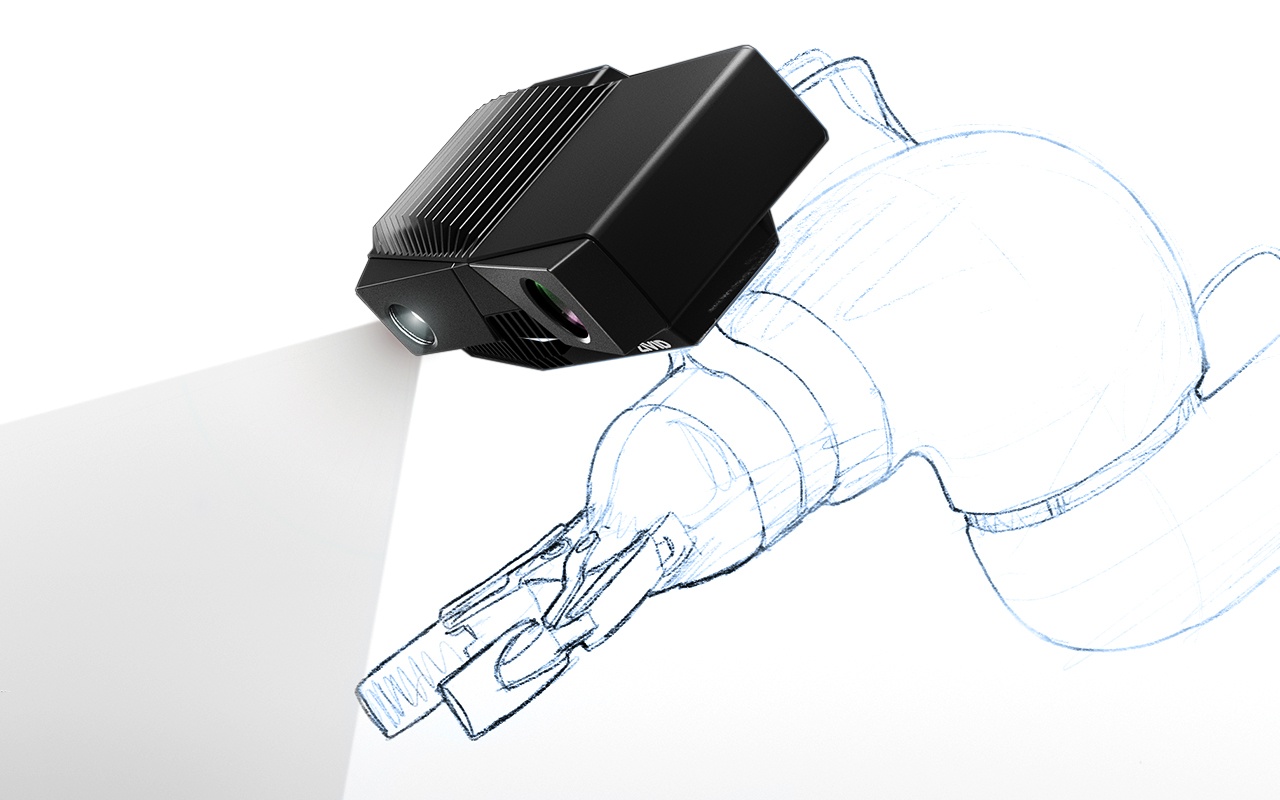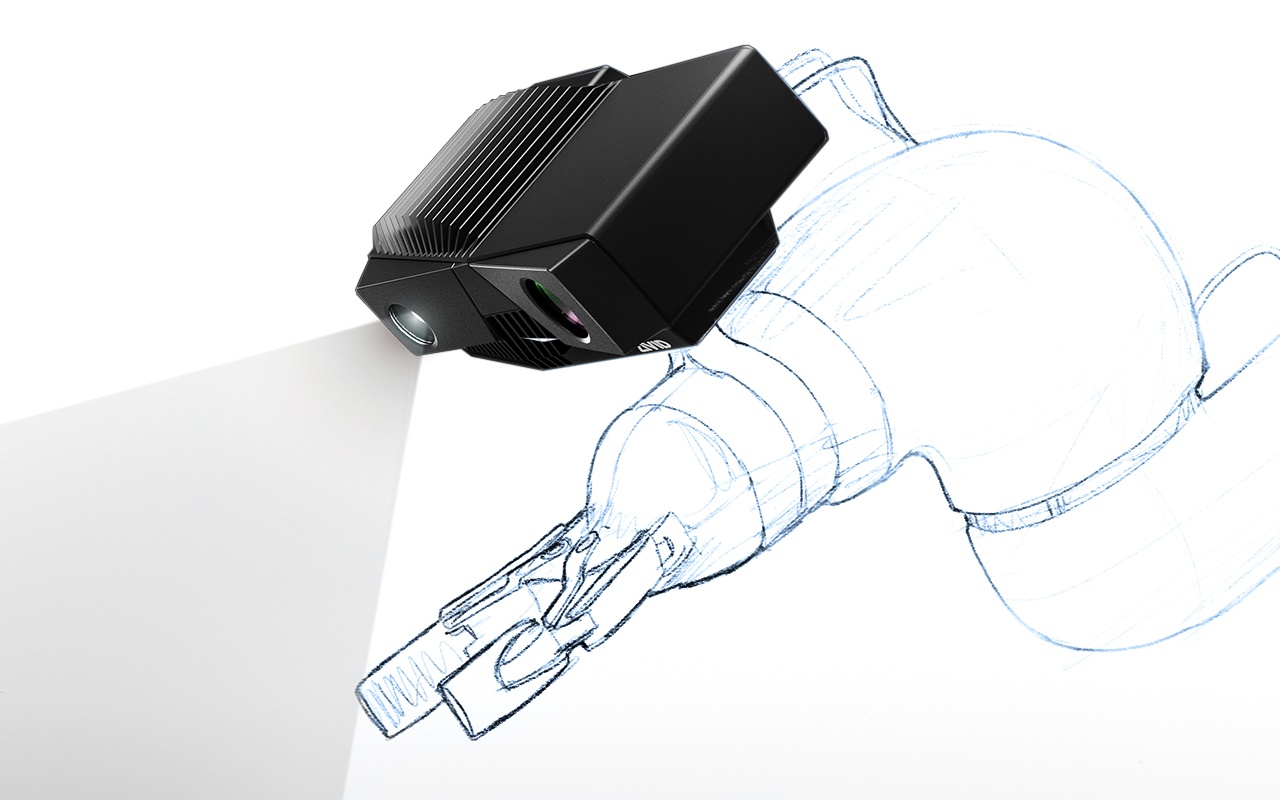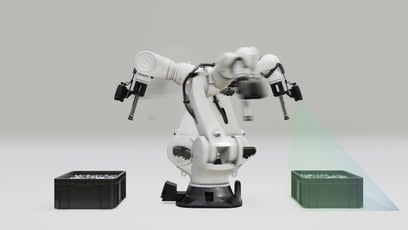
Small and Medium-sized Enterprises account for 99% of the businesses in every main industry sector. To compete and evolve, an ever-increasing number of SMEs are automating their production and adopting robots for automation.
Small-scale manufacturing and rapid production changes are factors that require new, smart and flexible robot and automation systems. Without compromising reliability, production cost must go down. Quality, accuracy, and profits up. Safe and effective human and robot interaction

The next era of industrial automation going towards Industry 4.0 raises the need for sophisticated vision systems and robots, which can recognize, evaluate and act in relation to the ever-varying surroundings and tasks. Tasks like bin-picking, packing, sorting, and assembly of a wide array of objects are incredibly complex due to challenging physical object characteristics such as pliability, irregular shapes, varied surface materials and colors.
When humans pick tiny objects from a bin, a complex, highly sophisticated set of synchronized actions take place. Our brain masterfully controls these actions based on sensory input from our eyes and via tactile feedback.
For robots, four crucial enabling technologies are necessary to replicate human actions:
Although different 3D cameras and scanners have existed for some time, present solutions have limitations due to unwanted compromises. A high-speed camera almost always comes with sacrifices in resolution and resolution accuracy.
Time-of-Flight (TOF) cameras and existing stereo vision cameras are considered fast, but they typically have millimeter and centimeter resolution range. At the other end of the spectrum, cameras that offer high resolution and accuracy, are slow and expensive. High accuracy scanners, for example, are often used in the automotive and aerospace industries.
These scanners are costly and take several seconds to capture an image. Additionally, most 3D cameras and high accuracy scanners only provide depth data with no color information.
The problem with 3D cameras has almost always been that seemingly good specifications don't meet the promises during real-life qualification. The output either is missing data points, or the result looks significantly worse than promised.
This mismatch between specifications and the actual output is because
The final problem is the quality of the object's surface, which varies significantly from matte and Lambertian, to reflective and shiny,
Understanding real-world parameters and designing a 3D vision solution that renders a true 3D representation of real-life objects is what separates today's machine vision experts.
Cutting-edge technology and innovations in both hardware and software are based on 15+ years of fundamental research at SINTEF (the largest independent research organization in Scandinavia) was brought over to the spin-off company, Zivid. With the Zivid One 3D camera, Zivid introduced several new and innovative features into a small and cost-effective, robust industrial form factor.
Quality of Data (QOD) is a term that separates bad, good, and excellent 3D cameras. QOD represents the significant innovations found in the Zivid One, and Zivid's high-resolution technology offer the best QOD in the industry.
The "quality" component of QOD is measured by the degree of uncertainty in each measurement. For every pixel in the imaging sensor, there is a 3D measurement (XYZ) which is a true-to-reality representation of the object in the camera's view.
Zivid defines the gold standard for QoD by providing:
With the Zivid One 3D portfolio of cameras, Zivid delivers
With support for several High Dynamic Range (HDR) modes, combined with smart and adaptive projection technology and adaptive noise filtering, Zivid One can handle difficult objects of almost any material, whether they are dark and absorbing or shiny and reflective.
As the market adopts the benefit of 3D vision, machine vision providers are faced with several challenges to be successful when implementing improved robot and automation systems. System integrators and their end-customers require 3D cameras that can withstand harsh work environments, varying light conditions and changing temperatures. Weight and size are also crucial elements, as heavy and bulky cameras cannot be mounted on robot arms without degrading load capacity or making maneuvering in complex environments difficult relative to a handling or interaction tasks.
The market has taken notice of
The Zivid One 3D camera enables robots to see the world in three dimensions with the same, or better, visual acuity as humans. This radically increases the robustness and performance of existing automation systems, and high accuracy 3D enables entirely new possibilities for automation.
Market reception is best summarized by a few quotes from our customers, which is why we feel we have something special here at Zivid:
These Stories on Zivid 3d cameras



Zivid brings
Gjerdrums
N-0484, Oslo
Norway
No Comments Yet
Let us know what you think